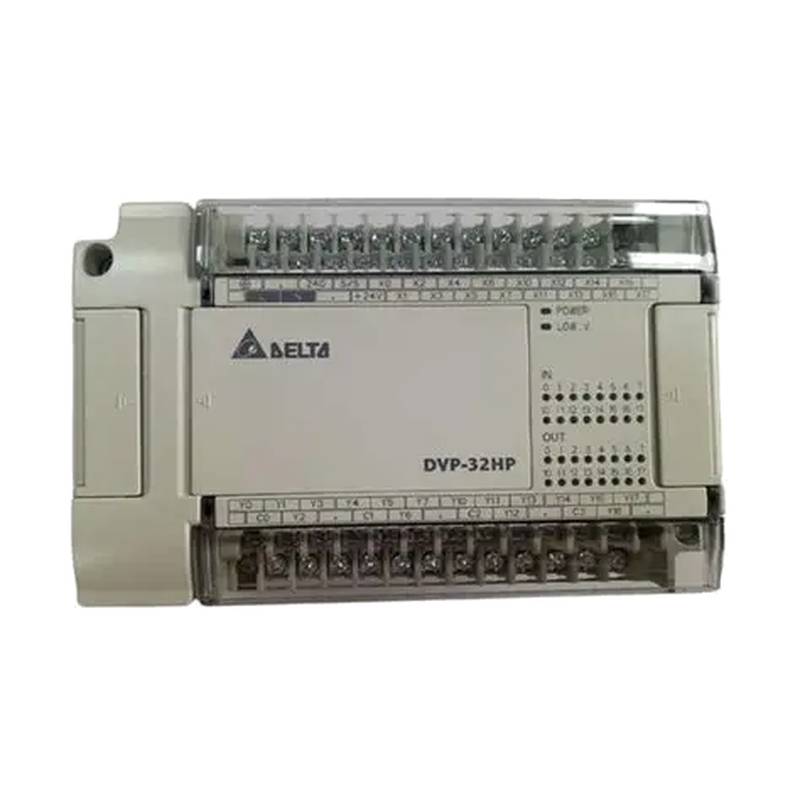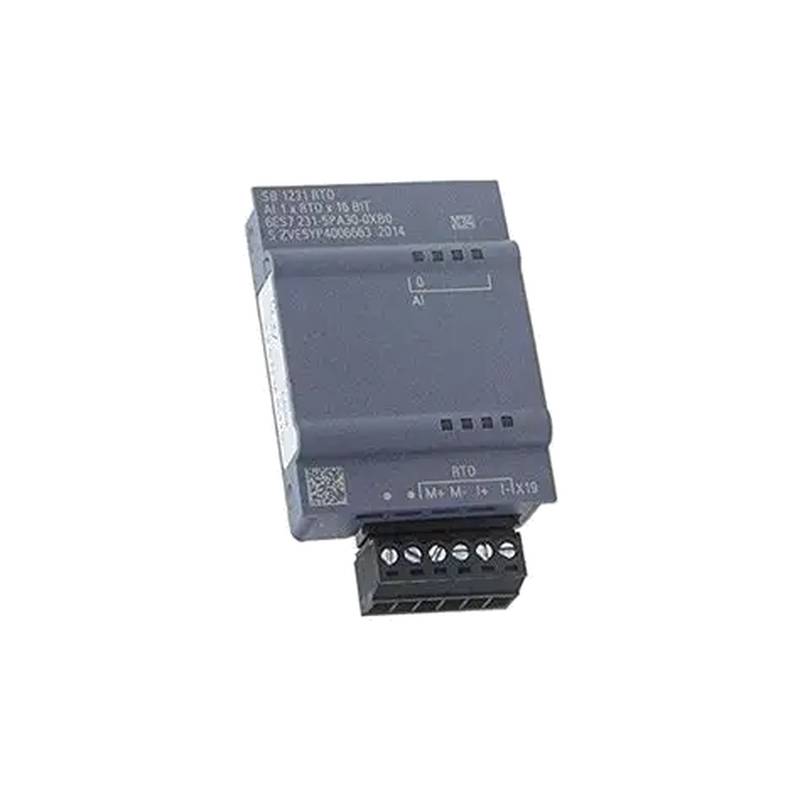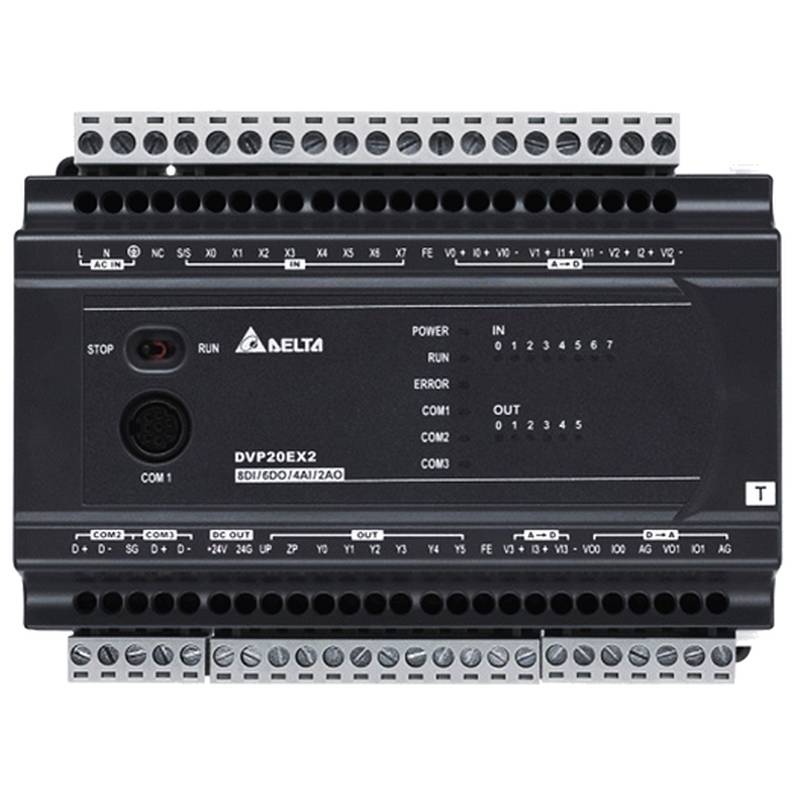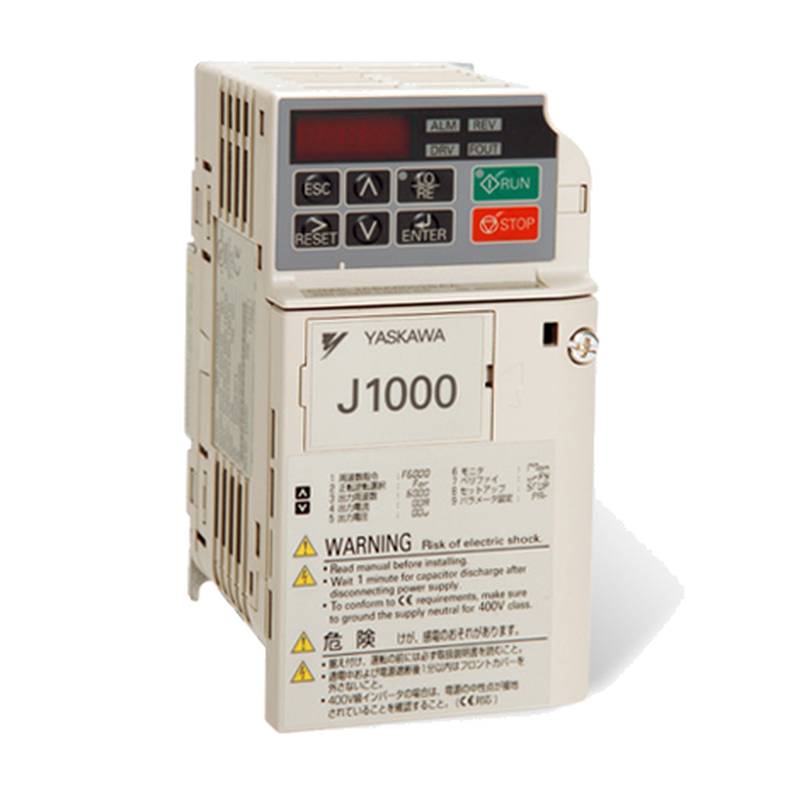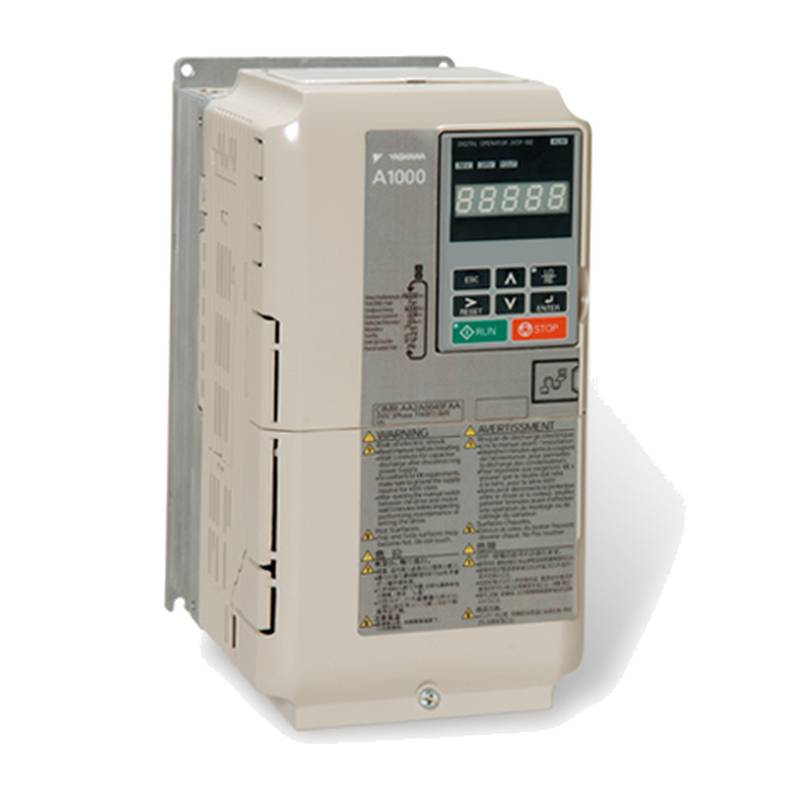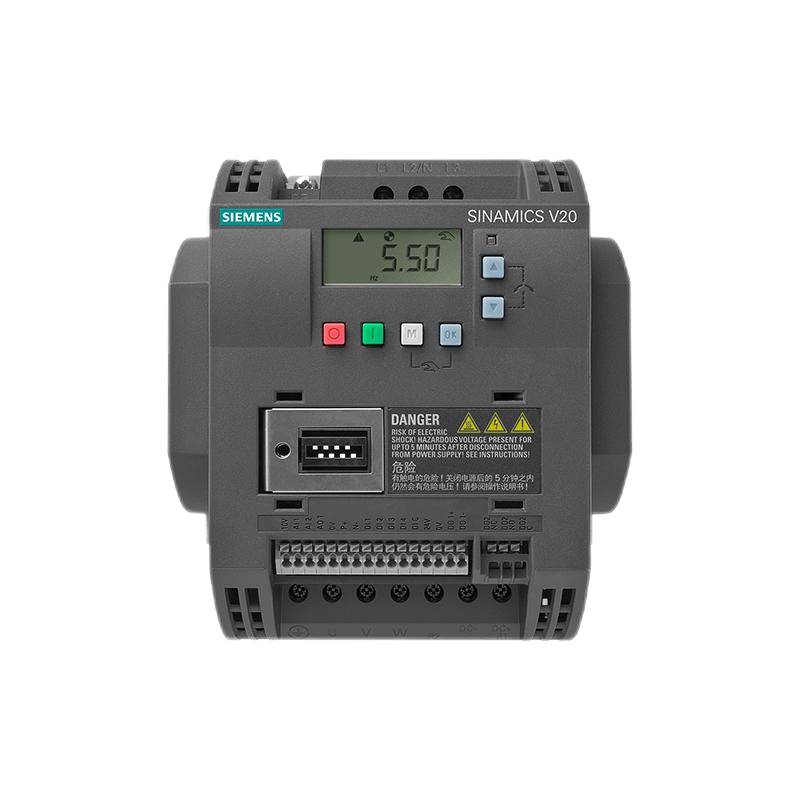
The Moxa MB3280 2-Port Modbus Protocol Gateway is a robust solution designed to bridge the communication gap between Modbus TCP and Modbus RTU/ASCII protocols, enabling seamless integration of disparate industrial systems. Its key advantages include versatile protocol conversion, high-density node connectivity, and ease of configuration through features like Auto Device Routing. The MB3280 is engineered for reliability in demanding industrial environments, offering a compact metal housing with IP30 rating and a wide operating temperature range. It supports up to 16 simultaneous Modbus TCP masters and can manage up to 62 serial slave nodes, making it an efficient choice for complex network architectures. Technical parameters such as a 10/100 Mbps Ethernet interface, selectable RS-232/422/485 serial ports with DB9 male connectors, and a wide input voltage range of 12-48 VDC further underscore its suitability for industrial applications.
Product Specifications
| Specification | Value | |
| :-------------------- | :--------------------------------------------------------------------- | :---------------------------------------------------------------------- |
| Ethernet Ports | 1 x 10/100BaseT(X) (RJ45 connector) | |
| Serial Ports | 2 x RS-232/422/485 (software-selectable) | |
| Serial Connectors | DB9 male | |
| Baudrate | 50 bps to 921.6 kbps | |
| Modbus TCP Masters | 16 simultaneous | |
| Serial Slave Nodes | Up to 62 | |
| Input Voltage | 12 to 48 VDC | |
| Operating Temperature | 0 to 60°C (32 to 140°F) | |
| Housing | Metal, IP30 rated | |
| Weight | 360 g (0.79 lb) | |
| Certifications | CE, FCC, UL, DNV, IECEx, IEC, EN standards | |
Core Features & Market Positioning
The Moxa MB3280 distinguishes itself in the industrial gateway market through its robust protocol conversion capabilities, specifically the seamless translation between Modbus TCP and Modbus RTU/ASCII formats. This interoperability is critical for integrating legacy serial devices into modern Ethernet-based control systems, a common requirement in industrial automation. The gateway's ability to support up to 16 simultaneous Modbus TCP masters, each capable of up to 32 simultaneous requests, ensures high-performance data handling and efficient network operation. Furthermore, its capacity to manage up to 62 serial slave nodes positions it as a highly scalable solution for networks with a significant number of connected devices. Moxa's proprietary Auto Device Routing feature simplifies configuration, saving engineers significant time and effort by automating the creation of slave ID routing tables. This ease of use, coupled with its industrial-grade design and comprehensive certifications (including CE, FCC, UL, and DNV), solidifies the MB3280's position as a reliable and trusted component in industrial automation, energy management, transportation, and utility infrastructure sectors.
Key Application Scenarios
The Moxa MB3280 2-Port Modbus Protocol Gateway is instrumental in a variety of industrial settings where communication between different Modbus protocols is essential. Its primary application lies in bridging Modbus serial devices (RTU/ASCII) with Modbus TCP/IP networks, facilitating the integration of older equipment into modern supervisory control and data acquisition (SCADA) systems. This is particularly valuable in scenarios involving factory automation, where numerous PLCs, HMIs, and sensors utilizing serial Modbus need to communicate with a central Ethernet network.
In energy management systems, the MB3280 enables the collection of data from smart meters, grid monitoring devices, and other utility infrastructure components that may employ serial Modbus communication, transmitting this information over an Ethernet backbone for analysis and control. Similarly, in transportation and traffic control networks, it can facilitate communication between serial-based traffic signal controllers, sensors, and central management systems. The gateway is also well-suited for building management and security systems, allowing for the integration of disparate serial-based environmental controls, access points, and surveillance equipment into a unified Ethernet network. Its robust design and wide operating temperature range also make it suitable for deployment in harsh environments found in the oil and gas, water, and wastewater industries for monitoring and control applications.
Practical System Integration Guidance
Integrating the Moxa MB3280 into an existing system is straightforward, supported by features like Auto Device Routing and flexible network configuration options. For physical installation, the gateway can be powered using a 12-48 VDC input, either through a power jack or a terminal block, accommodating various power supply setups. Connection to the network is achieved via a standard 10/100 Mbps Ethernet port using an RJ45 connector; a straight-through cable is used for connecting to a hub or switch, while a crossover cable is required for direct connection to a PC.
The two serial ports, configurable as RS-232, RS-422, or RS-485, utilize DB9 male connectors for device interconnection. For RS-485 communication, crucial for multi-drop serial networks, DIP switches are available for configuring termination resistors (120 ohms) and adjustable pull-high/low resistors, which are essential for signal integrity in longer cable runs or environments with high electrical noise. The gateway can be mounted via DIN-rail, wall mounting, or simply placed on a flat surface, offering flexibility in deployment. Configuration is accessible through a Web Console (HTTP/HTTPS), MGate Manager software, or Telnet Console, with support for secure protocols like HTTPS and SSH.
Operation and Risk Mitigation
Operating the Moxa MB3280 is designed to be intuitive, yet robust for industrial applications. The gateway supports a wide operating temperature range of 0 to 60°C, ensuring reliability in various environmental conditions. Its metal housing with an IP30 rating provides protection against dust ingress, suitable for most industrial settings.
To mitigate operational risks, it's crucial to ensure correct wiring and power supply. The device requires a 12-48 VDC power input, and using a UL-listed External Power Supply that meets SELV and LPS standards is recommended for safety and performance. In RS-485 configurations, proper termination resistor settings are vital to prevent signal reflections and data corruption, especially in networks with multiple devices or long cable runs. Troubleshooting common communication issues typically involves verifying communication parameters (baud rate, parity, data bits, stop bits), checking physical connections, and ensuring that Modbus device IDs are correctly configured and unique. The gateway also offers embedded traffic monitoring and event logging, which can aid in diagnosing and resolving communication problems efficiently.
Scalability & Long-Term Value
The Moxa MB3280 provides significant long-term value through its inherent scalability and compatibility with evolving industrial communication standards. Its architecture is designed to accommodate growth, supporting up to 16 simultaneous Modbus TCP masters and a substantial number of serial slave nodes (up to 62). This capacity allows businesses to expand their networked devices without requiring a complete overhaul of the gateway infrastructure.
Moreover, the MB3280 is a key component in transitioning towards Industrial IoT (IIoT) and digital transformation initiatives. By converting serial Modbus data to Modbus TCP, it bridges the gap between legacy operational technology (OT) and modern IT infrastructure, enabling data acquisition and analysis for predictive maintenance, operational optimization, and smart manufacturing. The gateway’s support for secure communication protocols like HTTPS and SSH also ensures that data transmitted over the network remains protected, aligning with increasing cybersecurity demands in industrial environments. Its compatibility with various Windows operating systems for configuration and management further enhances its long-term utility and ease of integration into existing IT ecosystems.
Frequently Asked Questions
How do I configure the Moxa MB3280 for my specific application?
The Moxa MB3280 can be configured using several methods, including a user-friendly web-based interface, the Moxa MGate Manager software, or a Telnet console. These options offer flexibility depending on your network environment and preference. The gateway supports routing by TCP port number or IP address, which simplifies integration into existing network setups. Additionally, Moxa's Auto Device Routing feature automates slave ID table creation, significantly reducing configuration time and complexity.
What are the primary advantages of using the Moxa MB3280?
The primary advantage of the Moxa MB3280 is its robust and reliable conversion between Modbus TCP and Modbus RTU/ASCII protocols. This capability is crucial for integrating legacy serial devices into modern Ethernet networks. It supports a high density of Modbus nodes, accommodating up to 16 simultaneous TCP masters and 62 serial slave nodes. Features like Auto Device Routing also simplify deployment and maintenance, making it a cost-effective and efficient solution for industrial automation.
What are the technical specifications of the Moxa MB3280 gateway?
The Moxa MB3280 features one 10/100 Mbps Ethernet port (RJ45) and two serial ports that are software-selectable for RS-232, RS-422, or RS-485 communication, using DB9 male connectors. It operates within a wide input voltage range of 12 to 48 VDC and has an industrial operating temperature range of 0 to 60°C. The gateway supports serial baud rates from 50 bps to 921.6 kbps.
How does the Moxa MB3280 facilitate system integration?
System integration is simplified through the MB3280's flexible deployment options, allowing routing by TCP port or IP address. Its Auto Device Routing feature eliminates the need for manual configuration of slave IDs, enabling faster network deployment. The gateway supports various industrial protocols and offers multiple serial port configurations (RS-232/422/485), ensuring compatibility with a wide array of field devices. Its rugged, metal housing and IP30 rating also ensure durability in industrial environments.
What are the key differences between MB3180, MB3280, and MB3480 models?
The primary difference lies in the number of serial ports offered: the MB3180 has one, the MB3280 has two, and the MB3480 has four RS-232/422/485 serial ports. While all models perform the same core function of converting between Modbus TCP and Modbus RTU/ASCII, the increased number of serial ports in the MB3280 and MB3480 allows for higher density integration of serial devices into a Modbus TCP network. The MB3280 and MB3480 also support routing by TCP port and IP address for up to 4 TCP clients/masters, whereas the MB3180 only supports this through ID mapping for up to 16 clients/masters.
How do I troubleshoot communication issues with the Moxa MB3280?
Troubleshooting typically begins with verifying communication parameters, ensuring that baud rate, data bits, parity, and stop bits match between the gateway and the connected Modbus devices. It's also essential to check physical connections, ensuring cables are secure and undamaged. Confirm that Modbus device IDs are unique and correctly configured within the MB3280's settings, and verify that the communication mode (RTU or ASCII) is set appropriately.
What is the role of Auto Device Routing in the MB3280?
Auto Device Routing is a patented feature that significantly simplifies the configuration process for engineers. Instead of manually creating a slave ID routing table, this function allows the gateway to automatically detect Modbus requests from a SCADA system and map them to the correct serial slave devices. This drastically reduces setup time and minimizes the potential for configuration errors, especially in large or complex Modbus networks.
Can the Moxa MB3280 be used for IIoT applications?
Yes, the Moxa MB3280 is well-suited for IIoT applications. By converting serial Modbus data into Modbus TCP, it acts as a crucial bridge between legacy operational technology (OT) and modern IT infrastructure, enabling data collection and transmission for cloud-based analytics, remote monitoring, and predictive maintenance. Its industrial-grade design and compatibility with secure protocols further enhance its value in IIoT deployments.
What are the power requirements for the Moxa MB3280?
The Moxa MB3280 operates on a wide DC input voltage range of 12 to 48 VDC. It can be powered via a power jack or a terminal block, offering flexibility in installation. It's important to use a power source that meets safety standards, such as a UL-listed External Power Supply marked "LPS" and rated for the appropriate voltage and current.
How does the MB3280 ensure data security?
While primarily a protocol converter, the MB3280 supports secure management protocols like HTTPS and SSH, which encrypt data during configuration and remote access sessions. Additionally, its IP filtering capabilities can be utilized to restrict network access, adding a layer of security to the gateway's communication. When integrated into a larger network, its role in segmenting serial devices from direct Ethernet exposure also contributes to overall network security.
What are the physical dimensions and weight of the MB3280?
The Moxa MB3280 has dimensions of 22 x 100 x 111 mm (with ears) and 22 x 77 x 111 mm (without ears). It weighs approximately 360 grams (0.79 lb). Its compact and lightweight metal housing design, with an IP30 rating, makes it suitable for installation in space-constrained industrial control panels and environments.
















